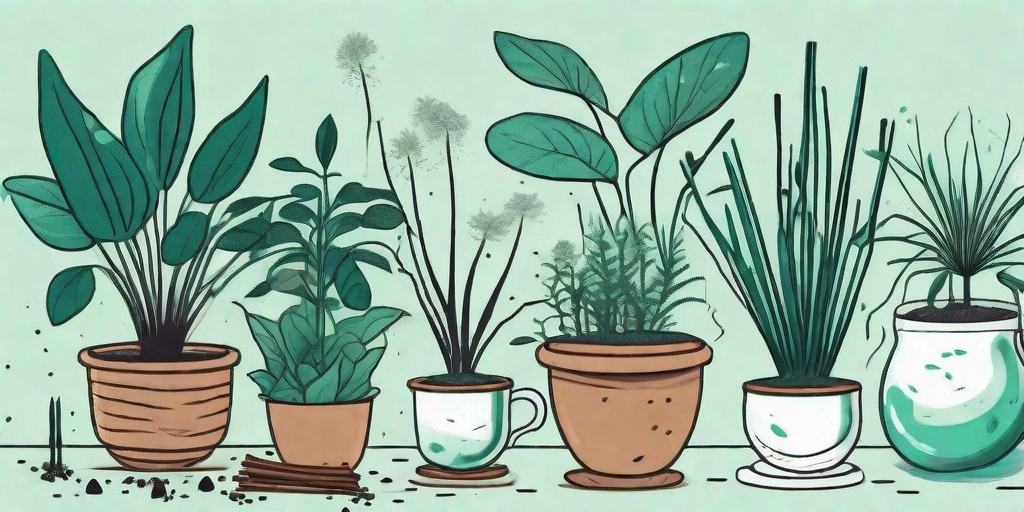
If you're a plant enthusiast, you know the joy of watching your green babies grow. But sometimes, uninvited guests crash the party. We're talking about the pesky fungus gnats and spider eggs that make themselves at home in your plant soil. These freeloaders not only ruin your plant's aesthetic but can also harm their health. But fear not, fellow plant parents! We've got the scoop on how to evict these unwelcome tenants.
Understanding the Unwanted Guests
Before we dive into the eviction process, let's get to know our unwanted guests a little better. After all, knowing your enemy is half the battle won!
Fungus Gnats
Fungus gnats are tiny, mosquito-like insects that love to hang out in damp soil. They're like the party animals of the insect world, always buzzing around your plants. While the adults are just annoying, their larvae can damage your plants by feeding on their roots.
These gnats are attracted to the moisture and organic matter in your plant soil. They're particularly fond of overwatered plants, so if you're guilty of showering your plants with too much love (and water), you might be rolling out the red carpet for these pests.
Spider Eggs
Spider eggs, on the other hand, are a bit more sneaky. They're usually hidden in the soil or under the leaves of your plants. While spiders can help control other pests, their eggs can lead to an infestation if left unchecked.
Spiders lay their eggs in a silken sac, which can contain hundreds of eggs. If you spot these sacs in your plant soil, it's time to take action before you have a spider nursery on your hands.
Getting Rid of Fungus Gnats and Spider Eggs
Now that we know our enemies, let's get down to the nitty-gritty of how to get rid of them. Here's your step-by-step guide to a pest-free plant paradise.
Step 1: Identify the Problem
The first step is to confirm that you indeed have a pest problem. Look for signs like tiny flying insects around your plants or small, round, white objects (spider eggs) in the soil.
If you're dealing with fungus gnats, you might also notice a decline in your plant's health due to the larvae munching on its roots. Spider infestations, on the other hand, can lead to visible webs on your plants.
Step 2: Isolate the Affected Plants
Once you've identified the problem, isolate the affected plants to prevent the pests from spreading. It's like putting them in quarantine - but don't worry, they won't have to wear masks.
Keep the isolated plants away from your other green babies until you're sure the pests are gone. This might take a while, so be patient.
Step 3: Treat the Infestation
Now comes the fun part - getting rid of the pests. For fungus gnats, allow the soil to dry out between watering. This will make the environment less hospitable for the gnats and their larvae.
For spider eggs, remove the egg sacs manually if possible. You can also use a mild insecticide spray to kill any remaining eggs or spiders.
Preventing Future Infestations
Once you've dealt with the current infestation, it's time to take steps to prevent future ones. After all, prevention is better than cure!
Proper Watering
Overwatering is a common cause of fungus gnat infestations. To prevent this, make sure you're watering your plants properly. This means allowing the soil to dry out between watering. Remember, your plants aren't fish - they don't need to be swimming in water all the time.
Regular Inspection
Regularly inspect your plants for signs of pests. This includes checking the soil for spider eggs and watching out for tiny flying insects. The sooner you spot an infestation, the easier it will be to deal with.
Keep Your Plants Healthy
Healthy plants are less likely to attract pests. Make sure your plants are getting the right amount of light, water, and nutrients. A healthy plant is a happy plant, and a happy plant is less likely to have unwanted guests.
FAQs
- Why are fungus gnats attracted to my plants?
- Fungus gnats are attracted to the moisture and organic matter in your plant soil. Overwatering your plants can make them more attractive to these pests.
- How can I prevent spider eggs in my plant soil?
- Regularly inspect your plants for signs of spider eggs. If you spot any, remove them manually or use a mild insecticide spray.
- Can fungus gnats and spider eggs harm my plants?
- While adult fungus gnats are mostly just annoying, their larvae can damage your plants by feeding on their roots. Spider infestations can also harm your plants if left unchecked.
So there you have it, plant parents! With these tips, you can show those fungus gnats and spider eggs who's boss. Remember, a little vigilance goes a long way in keeping your plant babies safe and healthy. Happy gardening!















